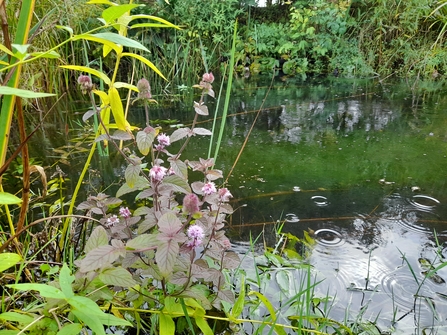There is something appealing about water to us all – whether it is a large stretch of water or smaller water features in gardens and local green spaces. Maybe this is because it’s closely linked to our health, wellbeing and survival? Ponds and water are a focal point in most outdoor spaces, an attractive and beneficial feature that has the gift of life and will quickly become home for many different species of wildlife.
Adding a pond is one of the best things you can do to attract wildlife in your garden or outdoor space, even a small pond can support dragonflies, newts and frogs. They also become a feeding ground for birds, bats, hedgehogs - who are amazing pest controllers! Water also helps bigger mammals such as badgers and foxes.
But if you don’t have space for a pond, adding bird baths, buckets and containers can bring so much life to your space. You can also start with a mini pond…


